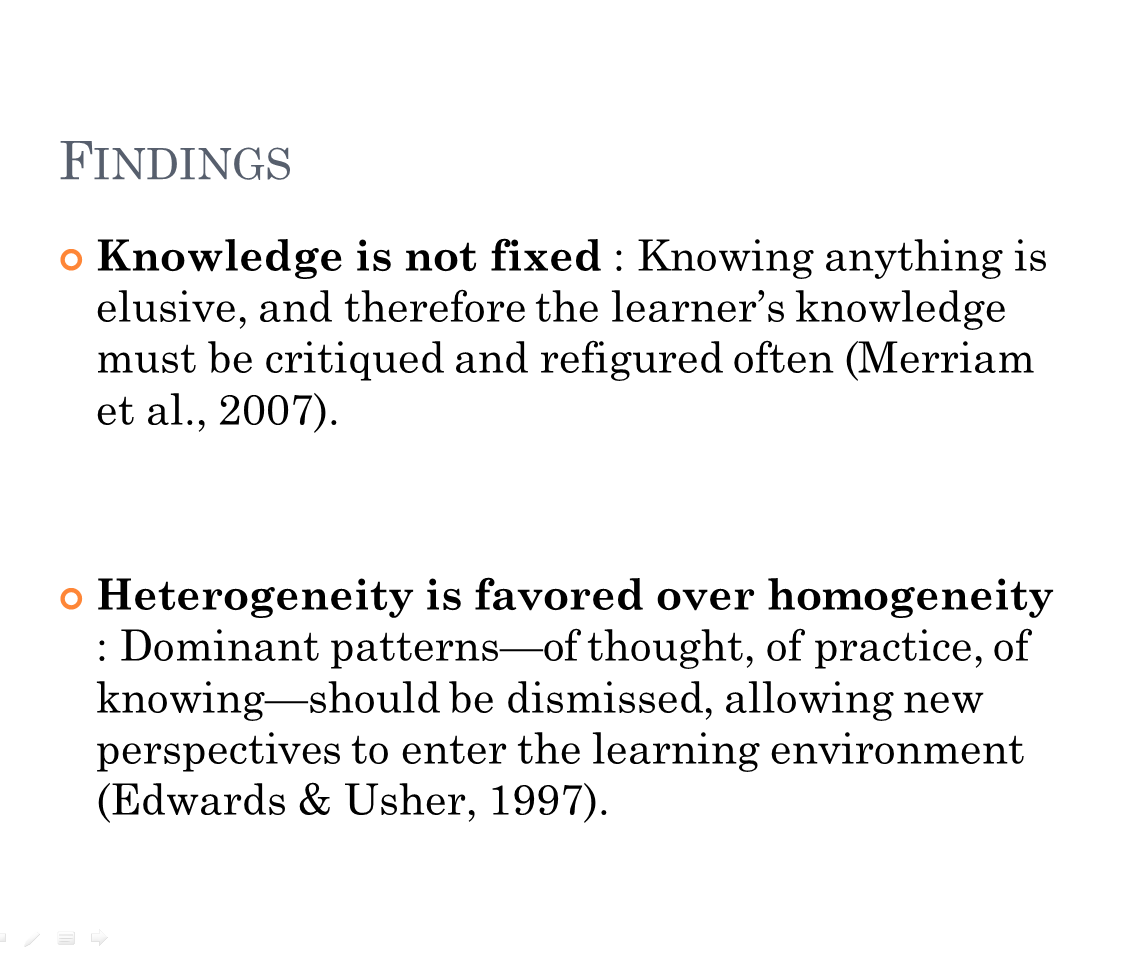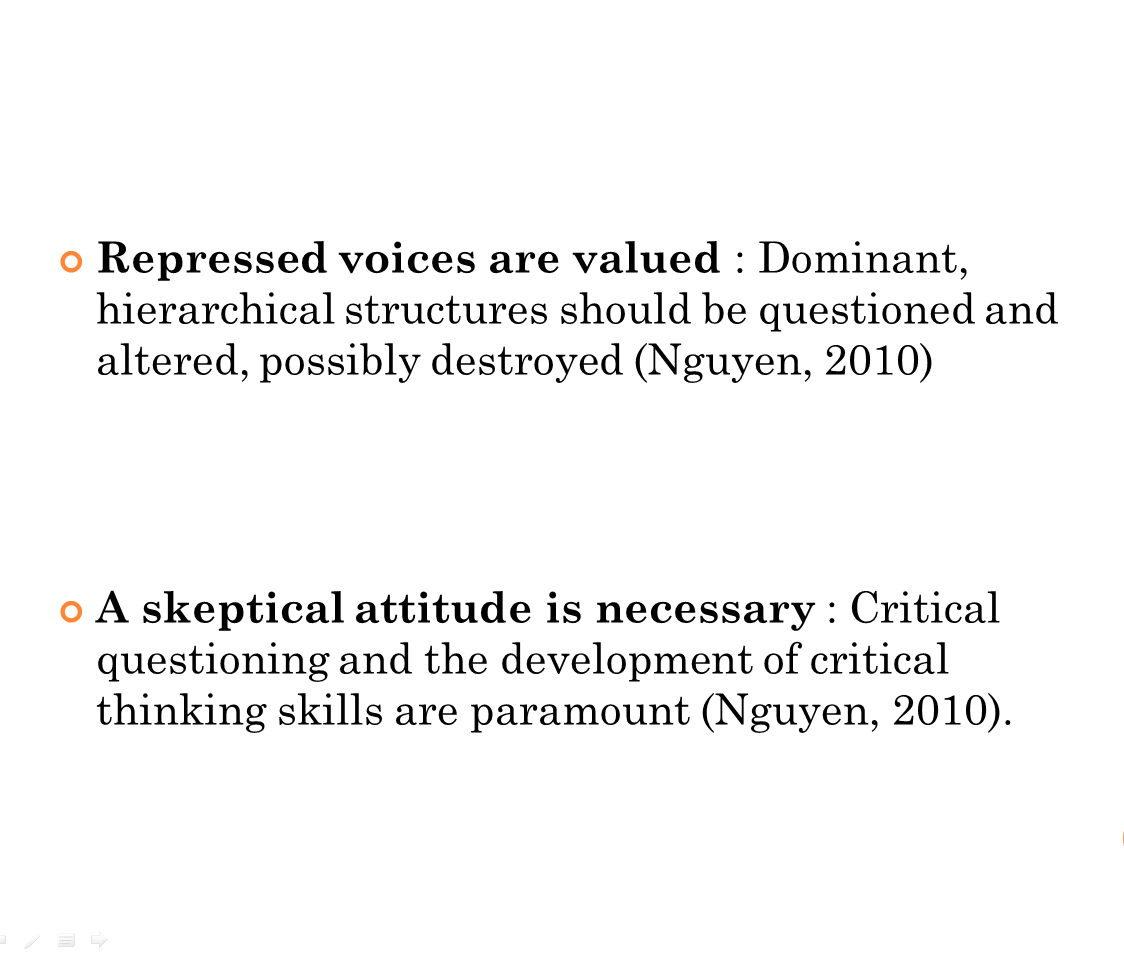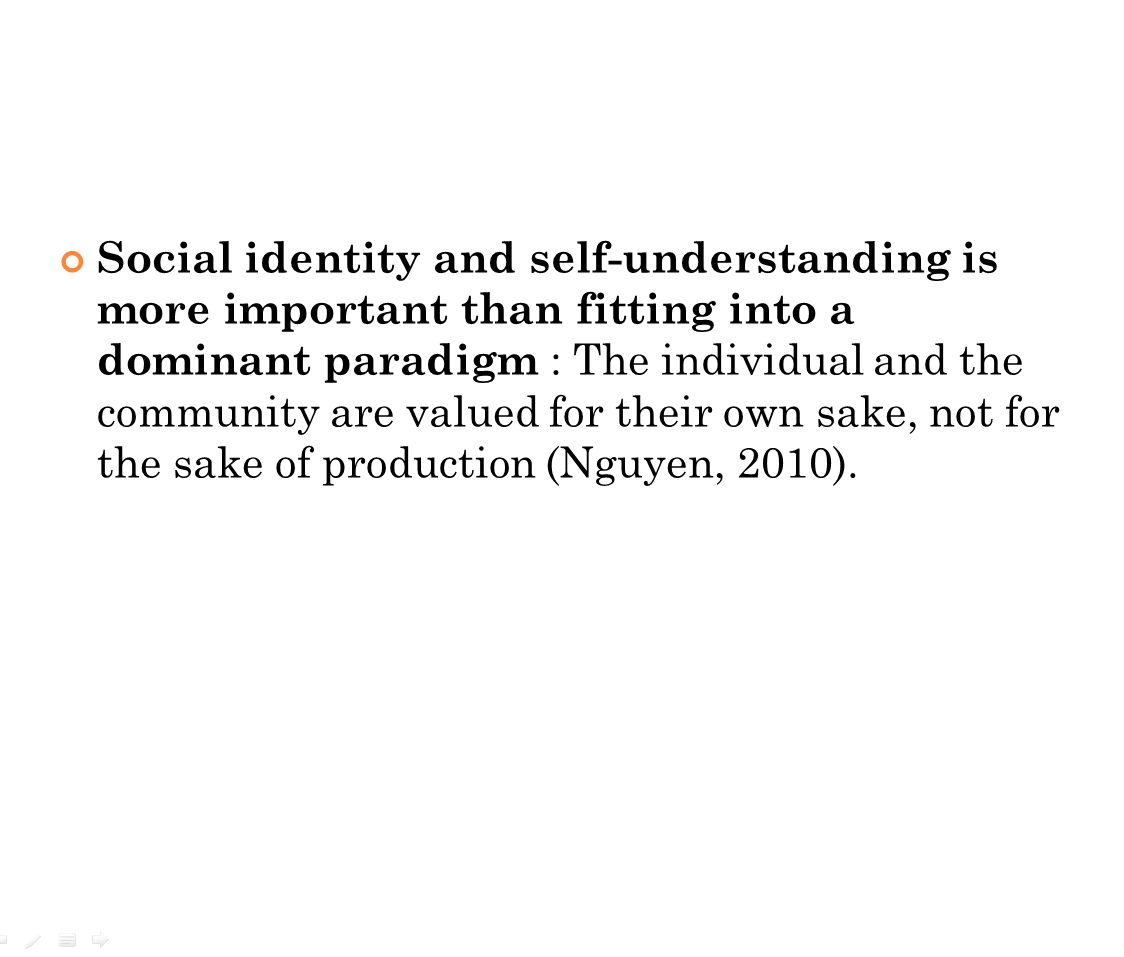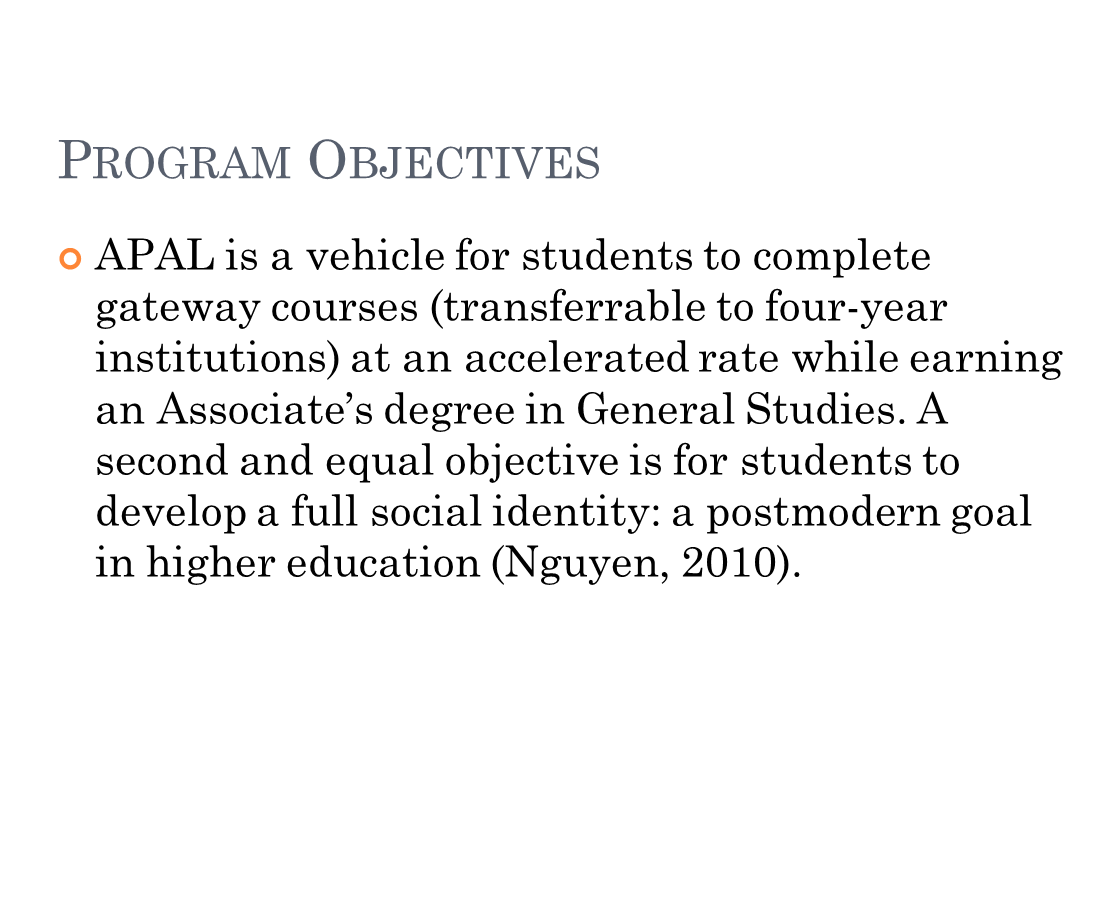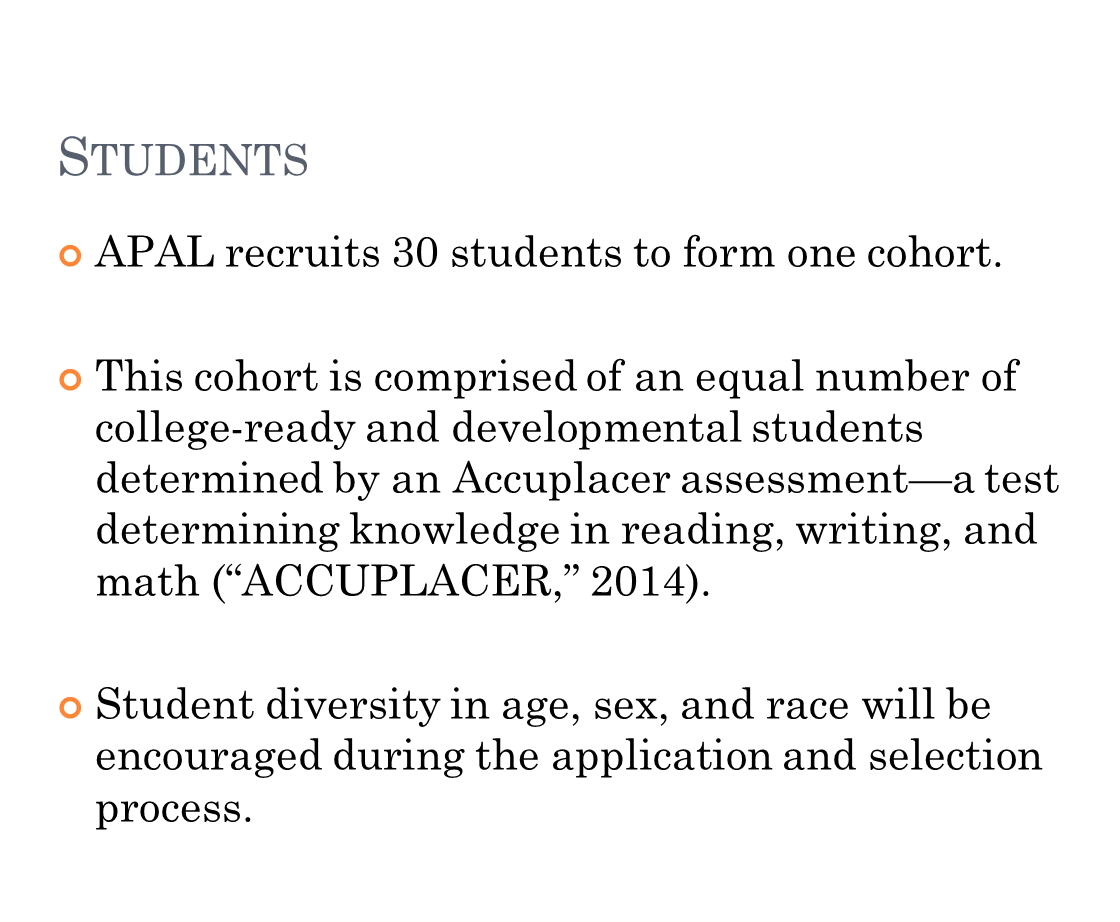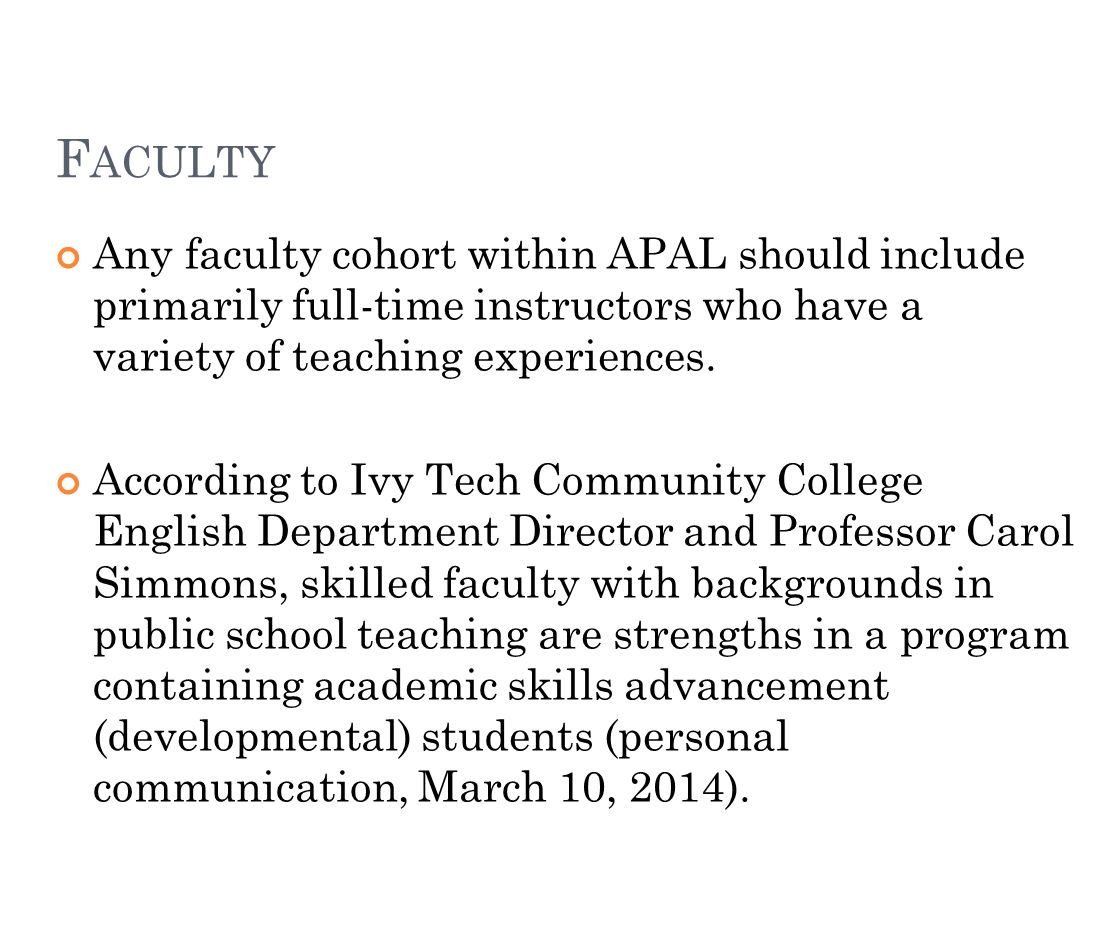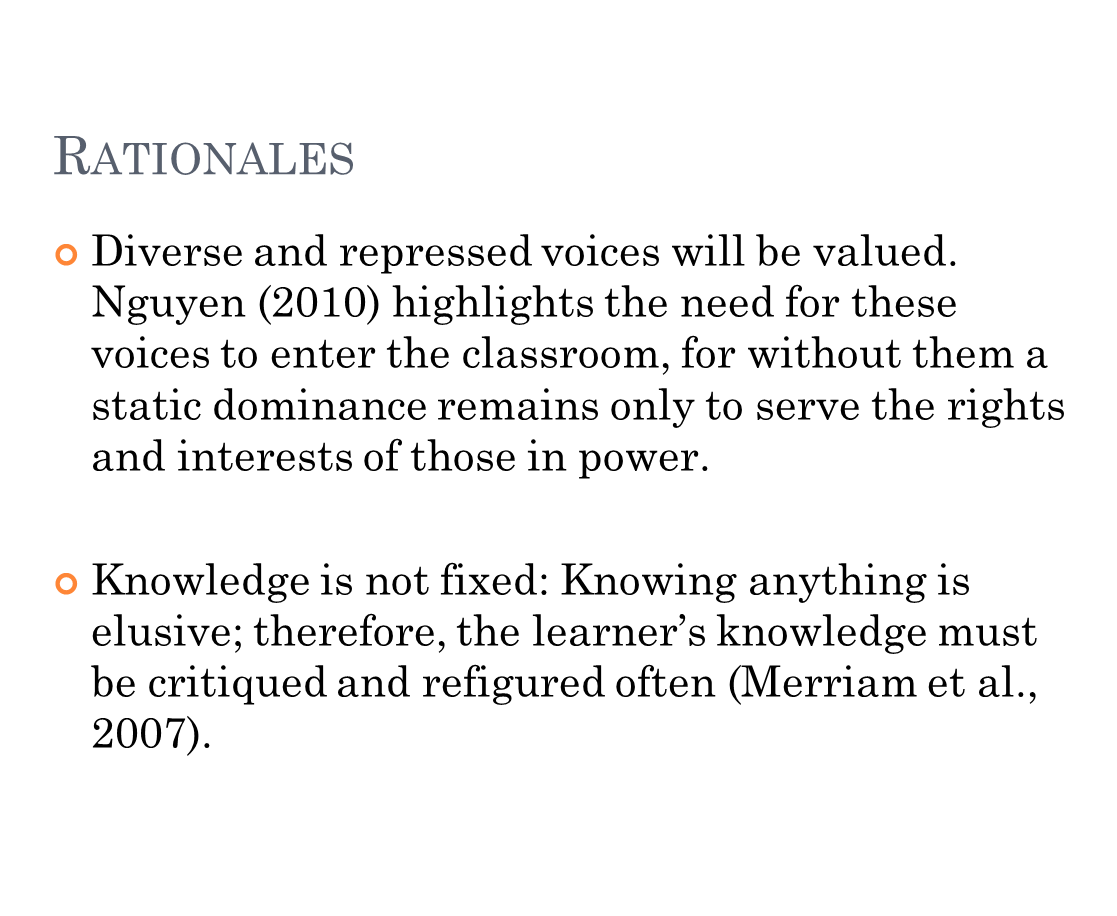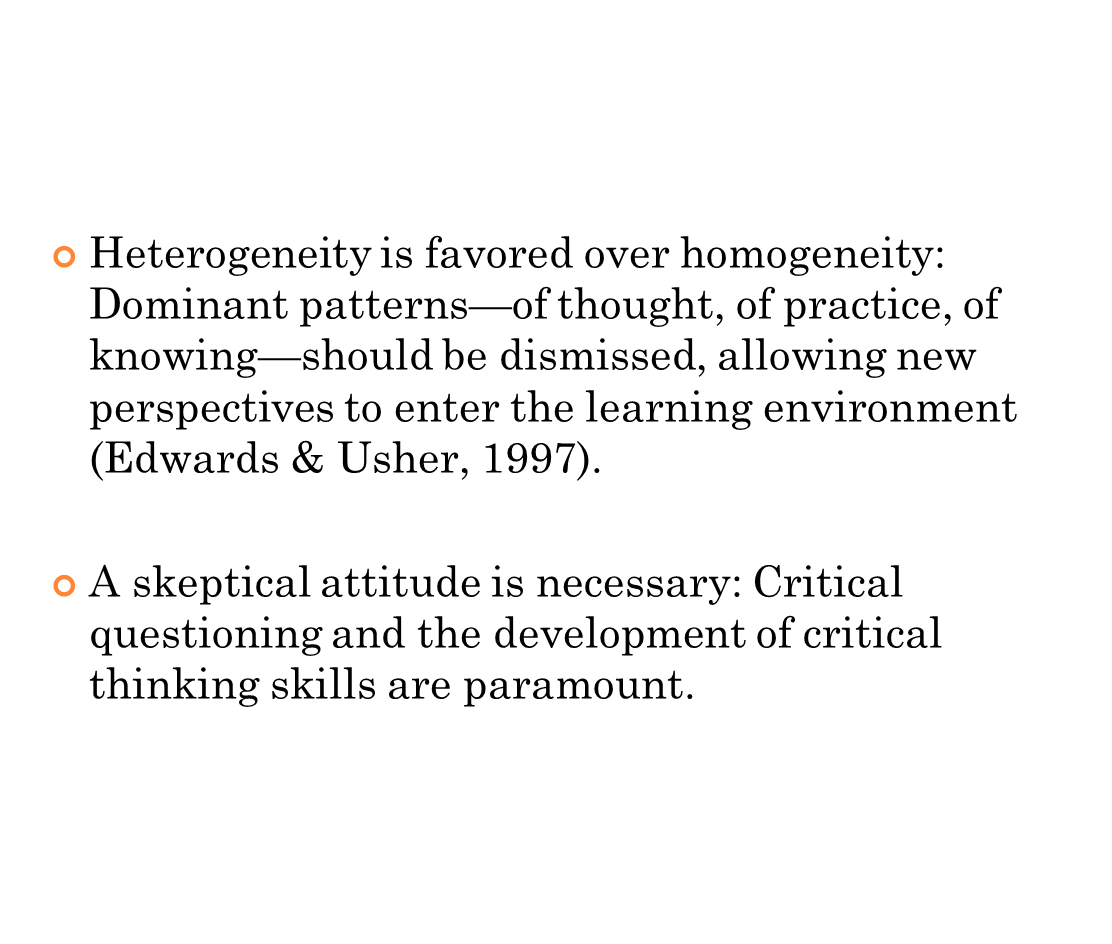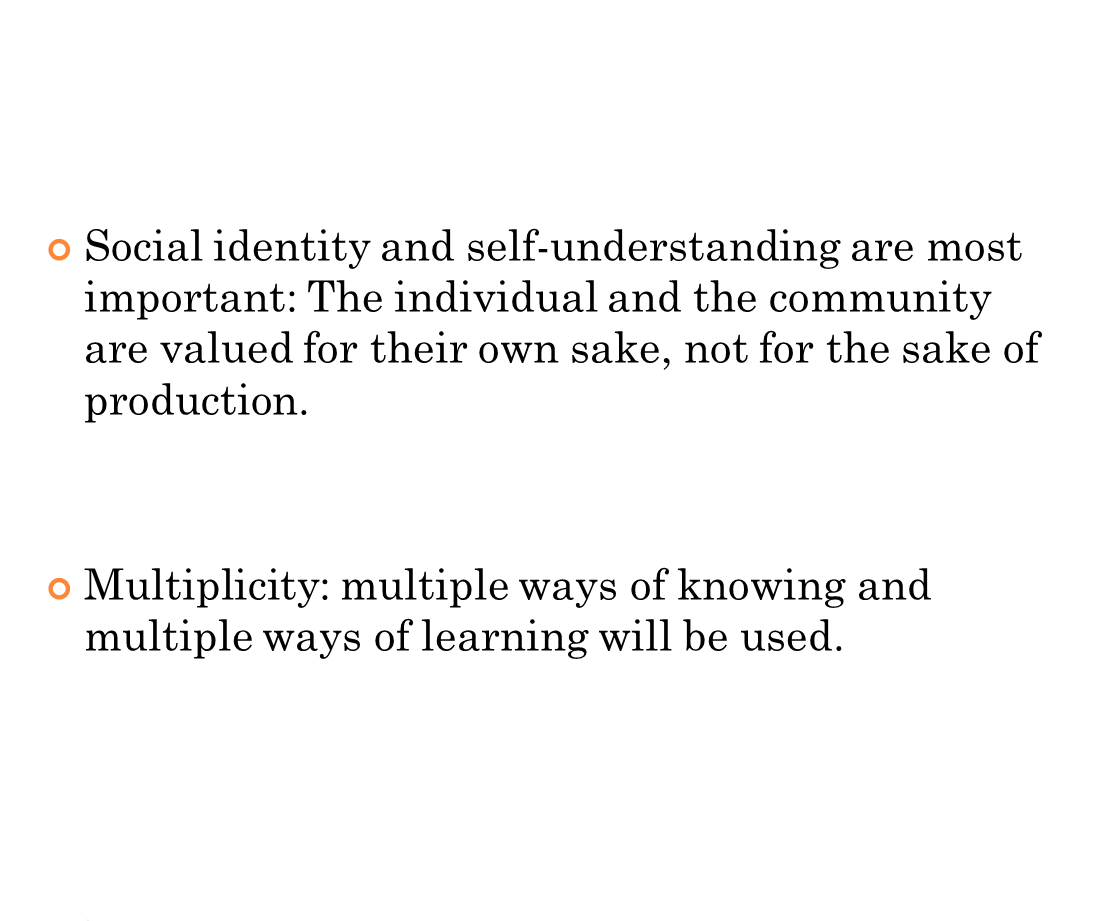Literature Review
The Postmodern In Adult Education
R. Joe Betz
Ball State University
Abstract
This paper aims to explore shifts from modern to postmodern thinking, emphasizing implications for practice in adult, continuing, and higher education. Beginning with a discussion of key beliefs in Modern and Postmodern theory, the reader moves to a more focused discussion of the postmodern ethos. A discussion of postmodernist concerns in education concludes this literature review. While not seeking an exhaustive exploration of postmodern thought within adult education, this paper nevertheless aims to explore postmodern implications in adult and higher education while providing a rudimentary diagram of key postmodern features found in the literature.
Modern to Postmodern
The shift in belief from modern to postmodern concepts is difficult to place, and this shift is certainly not complete, but through defining Modern and Postmodern beliefs we will see important, theoretical differences. Reviewing research by Nguyen (2010), Bell (1976), and Merriam, Caffarella, & Baumgartner (2007), and a brief philosophical point by Jean Baudrillard interpreted by Felluga (2014), the most noticeable thematic changes from stability to instability and singularity to multiplicity are discovered.
“Modernism is largely about order and rationalism” (Nguyen, 2010, p. 90), valuing stability, reason, and the ability to discover Truths through scientific, testable means. Its peak occurring between 1890 and 1930, industrialization, colonization, and technological progress encouraged the belief that disorder, disruption, and chaos could be eliminated, which was beneficial (Bell, 1976 as cited in Nguyen, 2010, p. 90). In the historical moment of two World Wars, control and order became emancipatory; homogeneity ruled over heterogeneity because a heterogonous culture held the seeds of chaos and confusion. Rules discovered in nature became touchstones for modernist philosophy, allowing the individual stability within fixed points to seek other fixed points.
Postmodernism, in contrast, rejects the belief of fixedness and is therefore a diametrically opposed development in thought to modernist philosophical assumptions. Reality and Truth are not knowable in so much as the self is not knowable, in so much as perspective changes meaning. In postmodern thought, questions become the answers to questions—skepticism reigns (Merriam et al., 2007, pp. 259-260). This logic of multiplicity creates discomfort and it is this discomfort one should embrace. A heterogonous culture is encouraged because singular, homogenous societies are static—or worse, dogmatic. There is no objective truth: multiple inputs are needed because, in fact, Truths do not exist but are replicas or simulacra, and it is the representation that creates the real (Nguyen, 2010, pp. 90-92; Felluga, 2014). These postmodern assumptions have led to various critiques, such as “offering few hopeful alternatives and solutions to social problems” (Hill, 2008, p. 86) and espousing generally negative and pessimistic views (Merriam et al., 2007, p. 262), but these are perhaps expected reactions amidst the uncertainty and uncomfortableness postmodern thought erects.
The Postmodern Principle(s)
Without a center, without fixed points, what might be fixed about postmodernism? What principle or principles can we isolate? At the present moment, we can highlight aspects of the “postmodern ethos” according to Nguyen (2010), Edwards & Usher (1997), Williams (2008), and Jacobs & Kritsonis (2007).
Concerning the construction of knowledge, Nguyen (2010) succinctly writes “postmodernism rejects the existence of absolute objective knowledge since what is called knowledge is merely constructed from words and their assigned meanings in a certain culture which views the world in different points of view” (p. 91). Our knowledge is constructed from words whose meaning is dependent within culturally specific contexts and individual use toward collective meaning, and this use, opposed to the modernist view of constructing agreed upon cross-cultural knowledge for purposeful uses, is decentered, “detached from legitimating metanarratives…[and] becomes increasingly based on specific cultural contexts, on localized and particularized knowledges…valuing…a multiplicity of experience” (Edwards & Usher, 1997, p. 159). An opening principle concerning knowledge would then appear to be that knowledge, created by culturally specific language, is not fixed, not knowable, but is created within localized forums that rely on the participation of a community.
An extension of this discussion of knowledge creation leads us to the value of collectivity and connectedness over individuality and isolation. Indeed, individuality can be viewed as a creation formed largely by social groups (Nguyen, 2010, p. 91). The value of multiple voices, then, is important and encouraged and becomes more important the more multicultural our society becomes (Williams, 2008, p. 3). Edwards & Usher (1997) highlight the paradox created by a globalized society, however, where when the voices multiply, globalization “induces effects of cultural specificity” and “greater integration…produces homogeneity and heterogeneity simultaneously” (p. 156). Still, this is not so much a criticism of the principle of multiplicity so much as a confirmation of postmodern belief, that multiple truths exist (homogeneity and heterogeneity here) and the definite is impossible to pin. Also, it reveals the principle of elevating suppressed identities for the sake of disseminating knowledge.
If the modern takes comfort in the suppression of minority voices for the sake of the dominant culture, the postmodern takes comfort in the valuing of all voices while questioning the dominant culture’s dominance. If the modern values metanarratives to explain phenomena, the postmodern values little narratives as a way to spread knowledge and question those metanarratives (Nguyen, 2010, p. 92). Therefore, the value of repressed voices is realized in postmodern thought.
Finally, skepticism was found to be a defining principle from the literature used in this paper. “Postmodernists focus on possibilities and do not define things concretely” (Jacobs & Kritsonis, 2007, p. 4), and this engenders a culture of skepticism, especially toward anything labeled “true” in the dominant culture. A dynamism exists within postmodern thought that never ceases to question current patterns, which can be disconcerting to an educator who finds comfort in current trends—nevertheless a push against trends to broader, more skeptical thinking is an important attribute of postmodern practice, and this is especially true in the field of education (ibid.).
Postmodernism in Adult Education
The modernist view of education maintains that students should be educated for appropriate functioning roles within society, but this idea is refigured in the postmodernist view to the goal of producing a citizen with a “full social identity” (Nguyen, 2010, p. 92). Therefore, the valuing of the self and connectivity with a community of others enters as a key educational goal, and knowledge retention becomes less of a concern because skepticism surrounds notions of knowledge.
Knowledge, which postmodernists see as a troubled, constructed commodity used to maintain the status quo of power relations, has no hierarchy. Multiple perspectives, multiple interpretations, are important, but postmodernism goes further in education: the repressed or silenced voices must enter the conversation and the mechanisms within these conversations (ways to enter, what is seen as valuable, etc.) should not exist to perpetuate dominance. I.e., whites, males, and the rich should not benefit from the oppression of silenced minorities (Hicks, 2004, p. 17 as cited in Nguyen, 2010, p. 93). Furthermore, students should be taught multiple ways of knowing, as a direct route to an absolute body of knowledge does not exist (ibid., p. 93).
In contrast to the valuing of scientific, technical achievement in modernism, postmodernism troubles the notion of technical progress by highlighting social and environmental disaster caused by these advances (Nguyen, 2010, p. 93). Ethical considerations are then another emphasis within the educational ethos of postmodern education.
Conclusion
This literature review has aimed to situate postmodernism in contrast to modernism and discuss key features and values found in postmodernism’s application within the field of adult and higher education.
General Themes : Implications
Knowledge is not fixed : Knowing anything is elusive, and therefore the learner’s knowledge must be critiqued and refigured often.
Heterogeneity is favored over homogeneity : Dominant patterns—of thought, of practice, of knowing—should be dismissed, allowing new perspectives to enter the learning environment.
Repressed voices are valued : Dominant, hierarchical structures should be questioned and altered, possibly destroyed.
A skeptical attitude is necessary : Critical questioning and the development of critical thinking skills are paramount.
Social identity and self-understanding is more important than fitting into a dominant paradigm : The individual and the community are valued for their own sake, not for the sake of production.
References
Edwards, R., & Usher, R. (1997). University Adult Education in the Postmodern Moment: Trends and Challenges. Adult Education Quarterly, 47(3-4), 153-68.
Felluga, Dino. (2011, January 31). Modules on Baudrillard: On Simulation: Introductory Guide to Critical Theory. Retrieved from http://www.purdue.edu/guidetotheory/postmodernism/modules/baudrillardsimulation.html
Hill, R. J. (2008). Troubling Adult Learning in the Present Time. S. B. Merriam (Ed.). New Directions For Adult And Continuing Education: Third Update on Adult Learning Theory, (119), 83-92.
Jacobs, K., & Kritsonis, W. (2006). National Strategies for Implementing Postmodern Thinking for Improving Secondary Education in Public Education in the United States of America. Online Submission
Merriam, S. B., Caffarella, R. S. & Baumgartner, L. M. (2007). Learning in Adulthood: A Comprehensive Guide. San Francisco, CA: Jossey-Bass.
Nguyen, C. H. (2010). The Changing Postmodern University. International Education Studies, 3 (3). Retrieved from http://www.ccsenet.org/journal/index.php/ies/article/viewFile/6052/5300
Comments
Name: James Justus
Email Address: jdjustus@bsu.edu
Subject: Comment
Message: A very philosophical and cerebral review. I found it to be educational and enlightening. I believe that I would fit into the postmodernist category. (My wife puts me in the cynical category...). I try to have my students think with a postmodernist philosophy.
Name: Kristy Garcia
Email Address: kjhagedorn@bsu.edu
Subject: Comments-Literature Review
Message: I found the implications of most interest as my focus has become adult learners. Today I feel like, due to lifelong learners, we do see the shift more often than not of peoples thought process. I also feel heterogeneous thoughts make for a more interesting class unless it is only directed toward the instructor. At the point it would become ineffective for the instructor to potentially complete all the objectives. I think a skeptical attitude is good to force critical thinking skills in the participants. I think the postmodern approach can be difficult since we all have an easier time with tangible concrete information and facts.
Name: Bo Chang
Email Address: bchang@bsu.edu
Subject: Comment
Message: Joe,
This is an excellent paper about postmodern! It is not an easy topic, but you understood it quite well!
So the question is, how can we apply it in practice? You have tried to discuss this question at the end of your paper, but you need to improve this part.
You can search some articles about how to apply the main features of postmodern in practice (features such as heterogeneity, multiple, non-hierarchical entry, favoring local knowledge rather than universal knowledge, etc.).
For example, in the past, we gained news and information from the mainstream media; the professional news reporters were the news producers. But nowadays, knowledge/news is not just produced by the dominant professionals. Everyone can post the news/knowledge online and share it with the public (for example, videos posted in Youtube and shared with the public). It is not just through one entry (from professionals) that we produce the knowledge, knowledge is produced through multiple entries by public.
Think about our course: we usually have a closed learning environment; students submitted their assignments to instructors. There is a one way learning entry between students and instructors. But now we are trying to break this closed learning environment and connect students to each other, and to the outside world, and let them exchange knowledge in an open learning environment. We post our products in blog so that everyone passing by your blog can gain knowledge from you. It can create instability, however, it can expand the boundaries of the knowledge source. Knowledge creation and sharing is dynamic, is changing, and is evolving. After you read your classmates’ assignments, or after you received feedbacks from others, you re-construct your thoughts. If a much larger audience reads your blog and comment on it, you will have a much larger pool of knowledge produced and exchanged.











